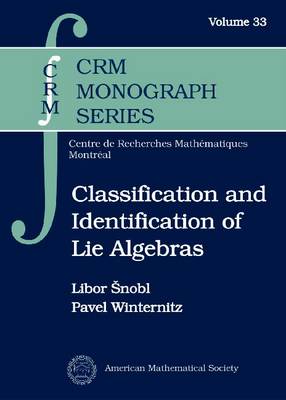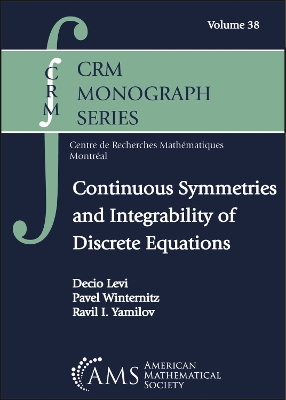CRM Monograph
2 total works
Classification and Identification of Lie Algebras
by Libor Snobl and Pavel Winternitz
Published 1 January 2014
The purpose of this book is to serve as a tool for researchers and practitioners who apply Lie algebras and Lie groups to solve problems arising in science and engineering. The authors address the problem of expressing a Lie algebra obtained in some arbitrary basis in a more suitable basis in which all essential features of the Lie algebra are directly visible. This includes algorithms accomplishing decomposition into a direct sum, identification of the radical and the Levi decomposition, and the computation of the nilradical and of the Casimir invariants. Examples are given for each algorithm.
For low-dimensional Lie algebras this makes it possible to identify the given Lie algebra completely. The authors provide a representative list of all Lie algebras of dimension less or equal to 6 together with their important properties, including their Casimir invariants. The list is ordered in a way to make identification easy, using only basis independent properties of the Lie algebras. They also describe certain classes of nilpotent and solvable Lie algebras of arbitrary finite dimensions for which complete or partial classification exists and discuss in detail their construction and properties.
The book is based on material that was previously dispersed in journal articles, many of them written by one or both of the authors together with their collaborators. The reader of this book should be familiar with Lie algebra theory at an introductory level.
Titles in this series are co-published with the Centre de Recherches Mathematiques.
For low-dimensional Lie algebras this makes it possible to identify the given Lie algebra completely. The authors provide a representative list of all Lie algebras of dimension less or equal to 6 together with their important properties, including their Casimir invariants. The list is ordered in a way to make identification easy, using only basis independent properties of the Lie algebras. They also describe certain classes of nilpotent and solvable Lie algebras of arbitrary finite dimensions for which complete or partial classification exists and discuss in detail their construction and properties.
The book is based on material that was previously dispersed in journal articles, many of them written by one or both of the authors together with their collaborators. The reader of this book should be familiar with Lie algebra theory at an introductory level.
Titles in this series are co-published with the Centre de Recherches Mathematiques.
Continuous Symmetries and Integrability of Discrete Equations
by Decio Levi, Pavel Winternitz, and Ravil I. Yamilov
Published 10 January 2023
This book on integrable systems and symmetries presents new results on applications of symmetries and integrability techniques to the case of equations defined on the lattice. This relatively new field has many applications, for example, in describing the evolution of crystals and molecular systems defined on lattices, and in finding numerical approximations for differential equations preserving their symmetries.
The book contains three chapters and five appendices. The first chapter is an introduction to the general ideas about symmetries, lattices, differential difference and partial difference equations and Lie point symmetries defined on them. Chapter 2 deals with integrable and linearizable systems in two dimensions. The authors start from the prototype of integrable and linearizable partial differential equations, the Korteweg de Vries and the Burgers equations. Then they consider the best known integrable differential difference and partial difference equations. Chapter 3 considers generalized symmetries and conserved densities as integrability criteria. The appendices provide details which may help the readers' understanding of the subjects presented in Chapters 2 and 3.
This book is written for PhD students and early researchers, both in theoretical physics and in applied mathematics, who are interested in the study of symmetries and integrability of difference equations.
The book contains three chapters and five appendices. The first chapter is an introduction to the general ideas about symmetries, lattices, differential difference and partial difference equations and Lie point symmetries defined on them. Chapter 2 deals with integrable and linearizable systems in two dimensions. The authors start from the prototype of integrable and linearizable partial differential equations, the Korteweg de Vries and the Burgers equations. Then they consider the best known integrable differential difference and partial difference equations. Chapter 3 considers generalized symmetries and conserved densities as integrability criteria. The appendices provide details which may help the readers' understanding of the subjects presented in Chapters 2 and 3.
This book is written for PhD students and early researchers, both in theoretical physics and in applied mathematics, who are interested in the study of symmetries and integrability of difference equations.

